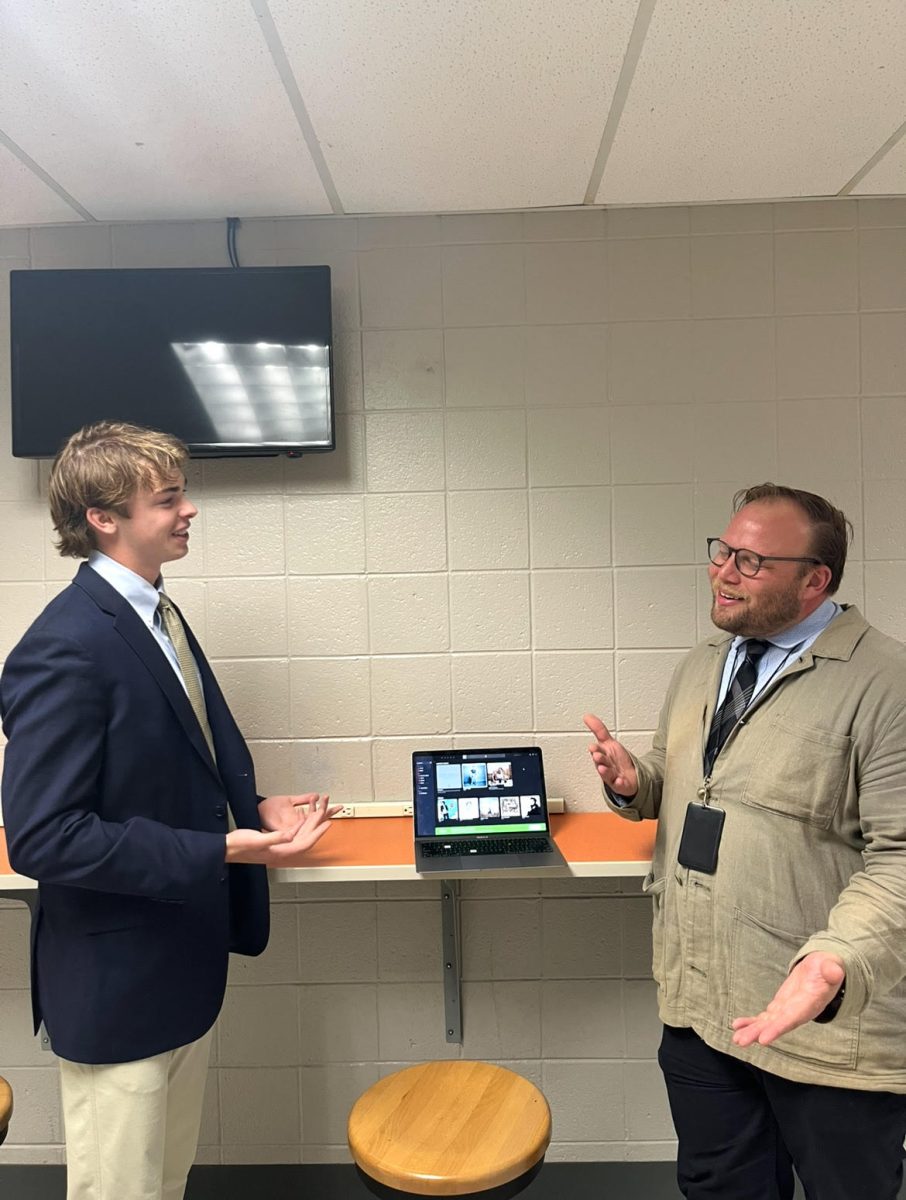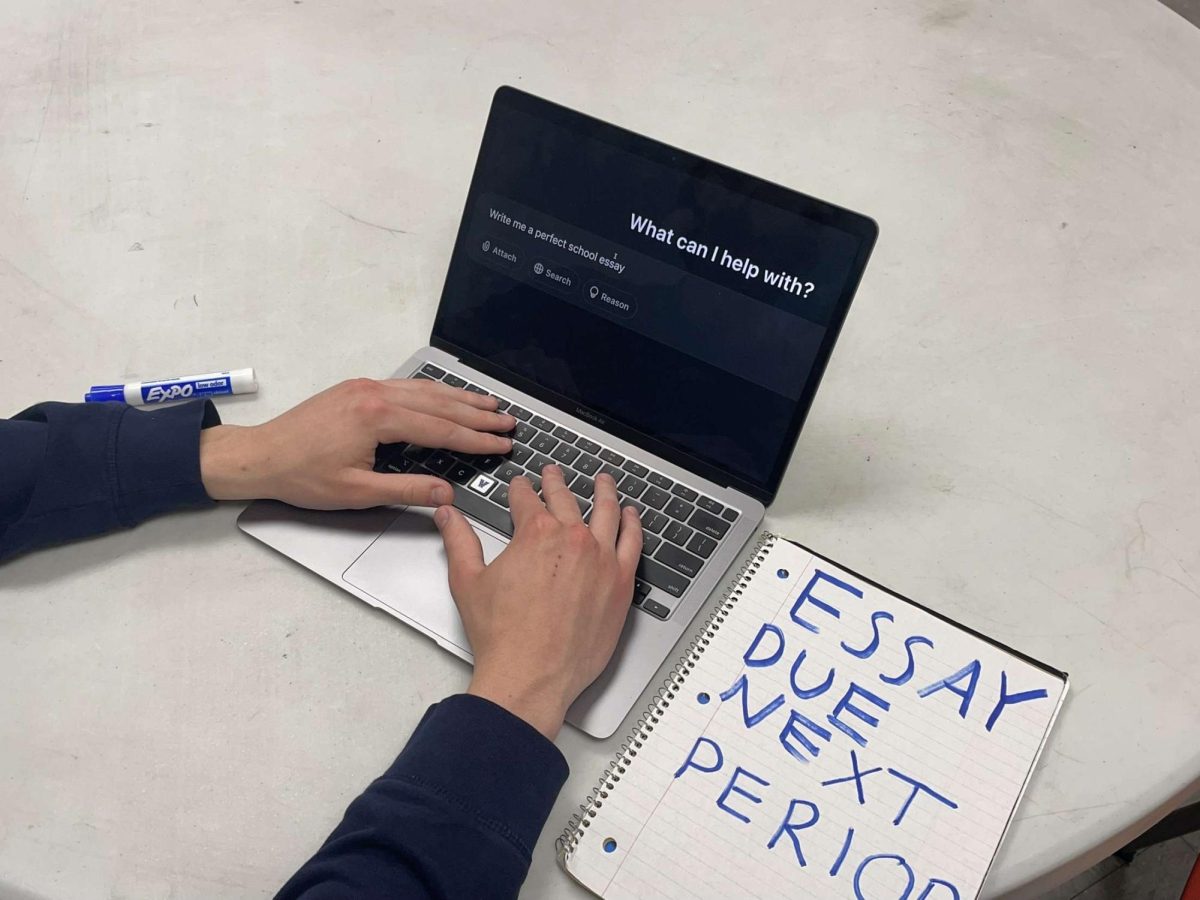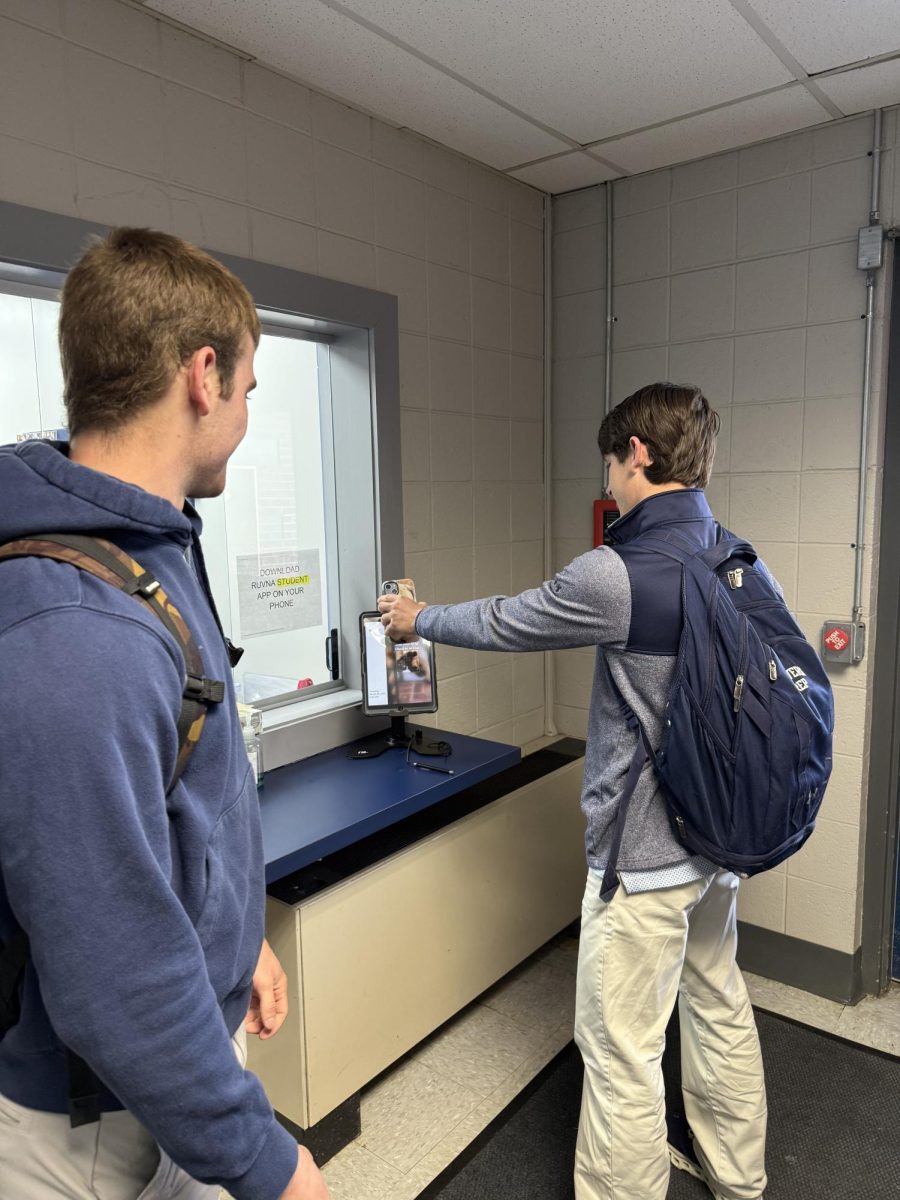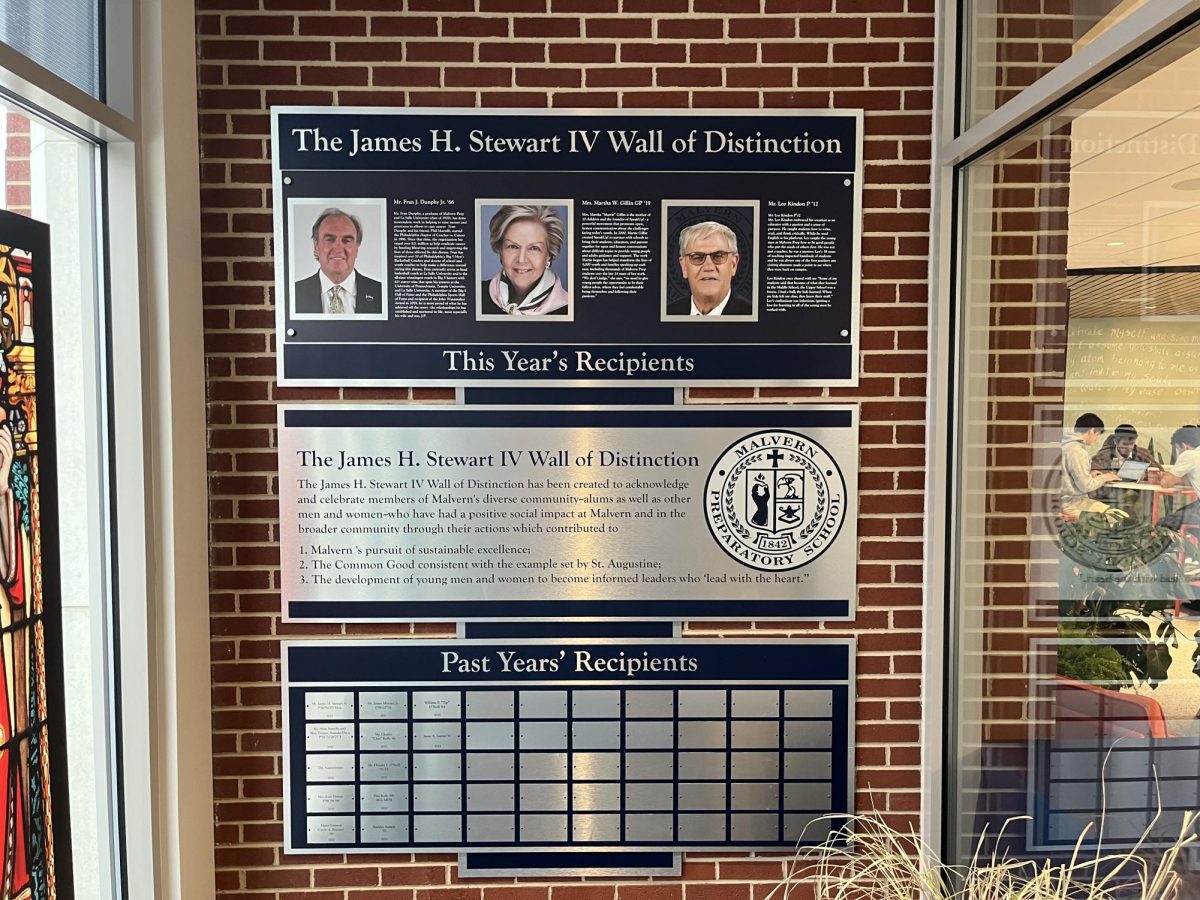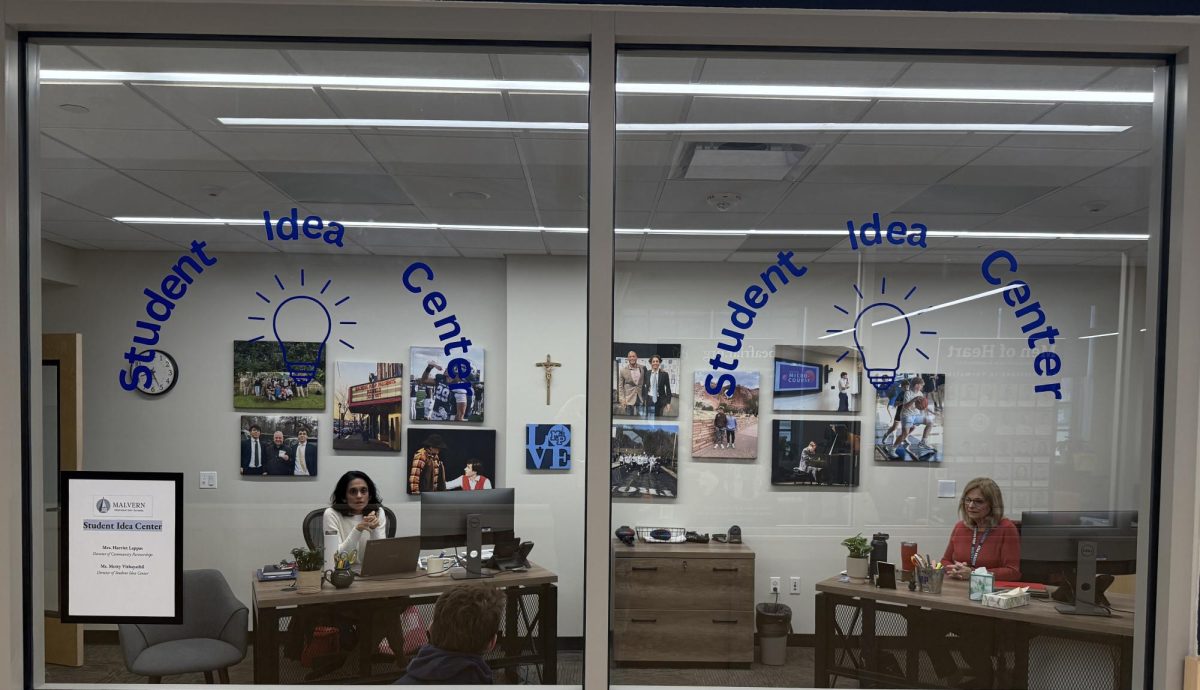The Malvern administration is confident that project-based learning will revolutionize education.
Other members of the Malvern community aren’t so sure.

Imagine that on the first day of school, a freshman walks into his first period social studies class. He expected to find the seats set up in rows like they were at his old school, but instead they are in groups of four. Class starts, and instead of a lecture, the teacher writes an open-ended question on the board, prompting discussion among the students.
The students ask further questions, and with the students now engaged the teacher gives the students some background notes on the topic. At the end of class, students are assigned a project relating to that essential question on the board.
This is one example of what is known as project-based learning.
Project-based learning is “an experience or an activity that allows an overarching either essential question or project to help drive the content, the instruction, and the daily classroom experience,” said Mr. Ronald Algeo, Head of the Upper School.
In this new curriculum of project-based learning, students are presented with a problem or a question at the beginning of classroom instruction. The project runs alongside of traditional content learning and test-taking assessments which are directed towards answering that problem or question. Algeo said that group projects are common in project-based learning, but individual projects are definitely involved as well.
Algeo said that this is different from the traditional form of teaching, where the content drives learning through lectures and note-taking with an occasional project towards the end of the unit.
“Project-based learning flips that,” Algeo said. “It presents a problem for students in the beginning. There are a lot of unknowns, and it allows students to explore.”

A NEW CHAPTER OF LEARNING
 The project-based learning initiative at Malvern began with the arrival of Mr. Christian Talbot in July of 2012 as the Head of School. Before Malvern, Talbot had been reading about and experimenting with project-based learning at the previous school he taught at, Regis High School in New York City.
The project-based learning initiative at Malvern began with the arrival of Mr. Christian Talbot in July of 2012 as the Head of School. Before Malvern, Talbot had been reading about and experimenting with project-based learning at the previous school he taught at, Regis High School in New York City.
When Talbot got to Malvern, he had discussions with about half of the faculty and some of the staff for a few months. The culmination of those conversations led to the formation of the first vision statement of his tenure— called Factoring 21st Century Education— that called for project-based learning as one part of Malvern becoming a more student-centered learning institution.
Malvern got closer to this goal by beginning the Sixth Grade Academy for students in the 2014-2015 school year.
Head of the Middle School Mr. Patrick Sillup said that the academy is “a dedicated team of teachers dedicated to a group of students to ensure the highest level outcomes that we can achieve.” This means that the group of sixth grade teachers works together to create the educational experiences the students receive, including project-based learning.
The team of teachers creates a theme for the year. For example, last year the fall theme for the Sixth Grade Academy was immigration. It focused on an essential question of why people immigrate, according to the Malvern website. Sillup said that all of their classes were focused on that theme in their curriculum.
“You would see different focal points,” Sillup said. “In English you would see Mr. Wasson working on specific grammar and writing techniques and ways to illustrate and tell a story more effectively. In Spanish you could look at the cultural perspectives and what’s happening in different countries, what types of economic factors are happening. In Global Studies, Mr. Swope thinks about push-pull factors and why people immigrate.”
Sillup stressed that tests and quizzes were still a vital part of the curriculum and that they have their place within project-based learning.
“What the projects, or the problems, or these various things have done is that they’ve allowed students to feel really connected with the learning,” Sillup said. “So, yes, while you do have a Kindon quiz or a Wasson quiz or a Mrs. Schreiner test, there are these other things that this can result in.”
Seventh grader Brendan McLaughlin was involved in the Sixth Grade Academy. He listed some examples of what they accomplished last year under the umbrella of immigration.
“We kicked it off with a trip to Ellis Island, where we felt what it was like to be an immigrant,” he said. “We then interviewed an immigrant, wrote about their story, made a presentation about it and then put our stories into a book the entire 6th grade made, which is available on Amazon.”
“We had to write the actual story for English class, dove into the history of the immigrant’s home country in Global Perspectives, and we also had many other objectives we had to complete through our other classes,” he said.
McLaughlin said that having projects to work on made the learning process much more enjoyable.
“The Sixth Grade Academy is so much better than traditionally taking notes, memorizing them for the test, and then forgetting them a month later,” McLaughlin said. “It is through applied knowledge and experiences that make us better students and eager to learn.”
Sixth grade English teacher Jamie Wasson said that the shift to the Sixth Grade Academy was not only rewarding to his students, but for him as well.
“I went from being a teacher kind of living in my own world at Malvern, doing my own thing at Malvern, enjoying it and doing it well, to myself becoming part of a team,” Wasson said. “That for me has been the biggest change.”
Wasson said that his students’ communication, presentation, and collaboration skills all improved dramatically.
“The way the boys grew that way was beyond anything I would ever see,” Wasson said. “I look to the real world and what they might be doing after they leave, high school, college, and get into a situation where they really need to have those skills. I think if they have already developed those well in the middle school and high school, they will be way ahead of the game.”
The Seventh Grade Academy was formed for the current school year, and the Eighth Grade Summit Experience will follow next year.
Sillup said that the Eighth Grade Summit Experience is a project to cap their middle school experience. It will be framed around themes of consumption and economy, and students will investigate these themes through three distinct lenses: international, domestic, and local.
For each “lens,” the students will work with an outside partnership to learn more about this idea of consumption and economy in their specific areas. For example, Sillup said that seventh grade students have already Skyped with another Augustinian school in Nicaragua and some of the grade will travel there at the end of their year. Other students will go to a farm in New York or local recycling plants.
After the trips, students will make a presentation to cap off their middle school experience.
Malvern plans to implement the academy model in the upper school for the ninth and tenth grades for the 2017-2018 school year. Talbot said that a roadmap team of ninth and tenth grade teachers are discussing how this would be implemented.
Social Studies Department Leader Mrs. Beverly Gordon, one of the captains of the roadmap team, said that there are no specifics just yet because the team is still in the early stages of discussion.
CHALLENGES OF A NEW MODEL
 Some members of the Malvern community are more skeptical of project-based learning.
Some members of the Malvern community are more skeptical of project-based learning.
English teacher Richard Roper has been teaching at Malvern for 40 years.
“I’m not at this point against it, but I can’t say I am totally for it,” Roper said. “I fear that emphasizing a project-based learning environment exclusively will take away from some of the individual needs that students have to acquire individual knowledge and skills.”
However, Algeo said that project-based learning is not just exclusively projects, but a mix of both projects and traditional note-taking and test assessments. He noted that this is often misunderstood with the idea of project-based learning.
“Twenty years ago, we just would have had quizzes and tests,” Algeo said. “Now, we still have quizzes and tests, but there is an overarching umbrella over the whole unit. There is a different goal than there was before.”
Talbot said that project-based learning complements and actually enhances individual skills and content learning because the project creates a purpose for obtaining knowledge.
“A project creates a center of gravity for the content and the skills to kind of stick to,” Talbot said, “as opposed to cramming for a test when you know that tomorrow morning you will be tested on this list of content and that you need to keep it in your head until after the test is over.”
Talbot said he is “agnostic” about test-taking, and called multiple choice tests a “complete waste of time.”
“After the test is over— and studies have shown this time and time again— you are more likely to forget the vast majority of that content because you have no reason to keep it in your head,” he said.
However, some students have questions about the relevance of projects, and how well this sort of learning prepares students for the future.
Sophomore Louis Margay described a group project in his Honors Chemistry class, called the Compound Competition Project. “In this project, we were given a substance, and had to present the benefits of it over another substance – for example, diesel vs. gasoline,” he said.
Margay said the project worked well for his group, but had little to do with the current curriculum they are learning.
Margay believes that projects can be graded somewhat subjectively, while tests are graded objectively. This concerns him. He also worries whether project-based learning prepares students for SAT and ACT tests and major exams in college.
“As a college preparatory school, our version of project based learning would have to be modified in order to prepare us for college,” Margay said. “I know there are many mandatory exams in college, so we would have to be prepared for those in some way.”
Eighth grader Josh Paulina also has mixed feelings about how group projects could prepare him for college.
“Group projects are important, but too many may not help us better prepare for college,” Paulina said. “We also need to learn how to work independently to complete projects. We need the skills to go back, take another look at our work and redo it if necessary.”
Algeo said that Malvern has been researching and surveying many colleges, and learning that project-based learning is now more common at the college level. He cited the Vanderbilt University School of Medicine, a traditionally lecture-heavy school according to Algeo, as one example of the trend.
“What they wanted to do was to see if they could give [students] a little practice with skills as well as content,” Algeo said. “While there still is a little content delivery through lectures and other ways, they give them a lot more time in the lab, practicing with surgery, doing cutting and sutures, doing a lot more student engagement than they ever have before.”
 “I could go on and on with all kinds of different colleges that do the same,” Algeo said.
“I could go on and on with all kinds of different colleges that do the same,” Algeo said.
In practice, the group work that is often involved with project-based learning can be challenging for students and parents.
Seventh grade Malvern parent Kathy Ayres said that making sure other students were fulfilling their responsibilities proved to be difficult in her son’s group projects.
“My son has had problems when another group member has not completed the work as promised,” Ayres said. “While this can be very frustrating, it forces my son to assess the situation and determine the best way to respond.”
“He may take over the role of group leader and address the situation with his classmate or he may decide to do the work himself. Neither situation is ideal, but it does teach students how to handle difficult working relationships which will serve them well in the future,” she noted.
Parent Michael Mankowski, whose two sons attend Malvern, said that group projects help to prepare students for life after high school.
“At work, you have to be able to work with specific personalities, different work styles, and with different people,” Mankowski said. “The sooner the students at Malvern get into that, and understand that and work through that, the better off you are with managing, communicating and working with other people as you get into college.”
Algeo said that having project checkpoints and partner feedback could be a way to monitor the members of the group and also a method to increase student accountability. In addition, Algeo said that these checkpoints allow the grading process to be more fair and accurate than just grading the final product where everyone gets the same grade.
Algeo said that Malvern also wants to implement a system of defining roles and giving clear expectations for those roles within group projects. He gave an example of how this system worked in a project in his own middle school Math class.
“I’d assess the student’s collaboration skills within those roles that they were given, but they would also assess themselves, which was really hard for them at first,” Algeo said. “The more they did it, the more honest they became. I started to notice a change there, certainly in terms of how they would assess each other, but also their responsibility to each other. So that helped guys to hold each other accountable.”
Sophomore Patrick Sayers thinks that execution is the key factor in making project-based learning work.
“While I do think that traditional tests and notes have their purpose in class, it helps immensely to have an applied goal for those to be geared towards,” Sayers said. “I hope project-based learning is integrated properly, because I see that it could either be a huge success or a huge miss.”
FOCUSING ON THE WHY
Algeo said that he understands the criticisms that come from the Malvern community about project-based learning, but he said that their feedback will be taken into account.
“The key is understanding the why behind it, which is increasing student engagement and motivation, and the opportunity to take ownership of it,” Algeo said. “That conversation is important. I’ve had that conversation with many people and I welcome it with families and students who say ‘I want more traditional.’ I get that, and I understand it.”
Talbot felt that the change was necessary to go from the traditional system of education to project-based learning because of the explosion of data and the internet in the 21st century.
“In the 20th century I think we fooled ourselves into thinking that we could create courses whether they were semester long or year long that could cover everything kids needed to know. That was never true,” Talbot said.
“In the 21st century, because of the explosion of data, we cannot pretend that anymore. So what is the competitive advantage for a learner in that situation? The competitive advantage is that the student can learn how to learn, to become a flexible learner, to be an adaptive learner,” he said.
Margay said that the current system of teaching works well, but he is open to changes.
“I like that our administration is taking a look at our education system and looking at it with the perspective of 21st century learning,” Margay said. “Sometimes changes are hard but they are also sometimes necessary so I hope that Malvern makes the right decision for us.”



